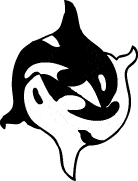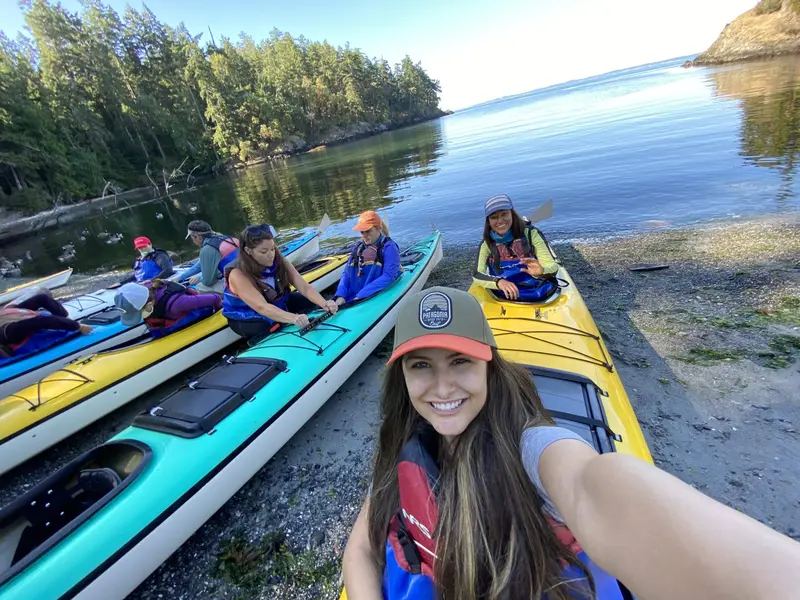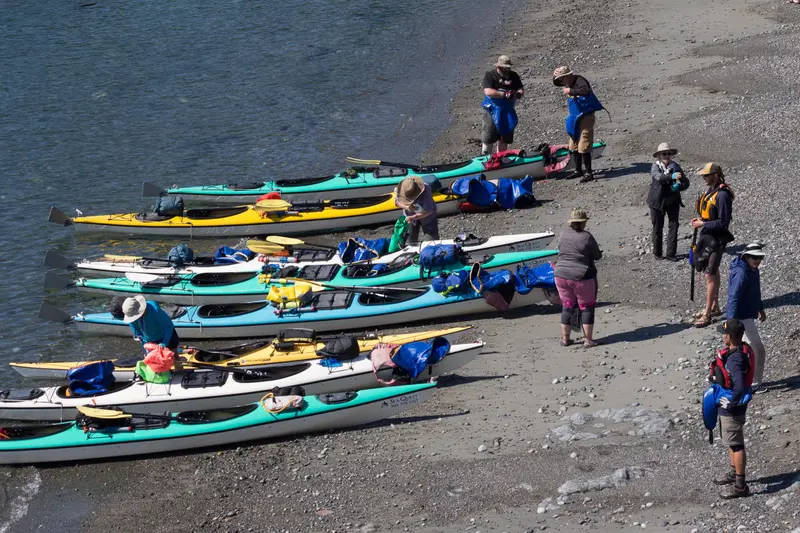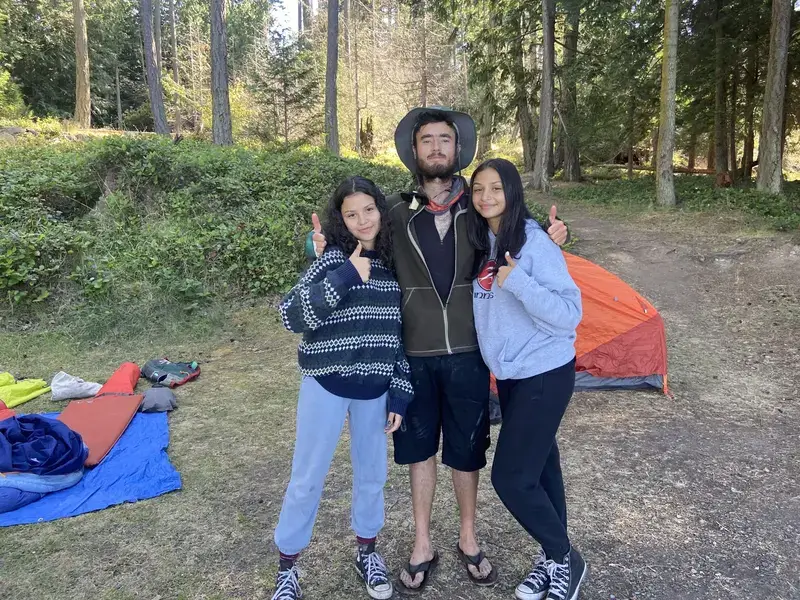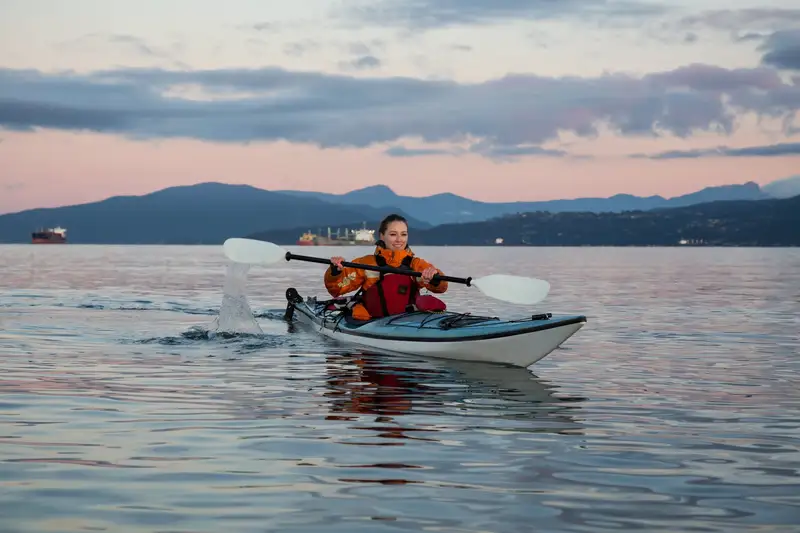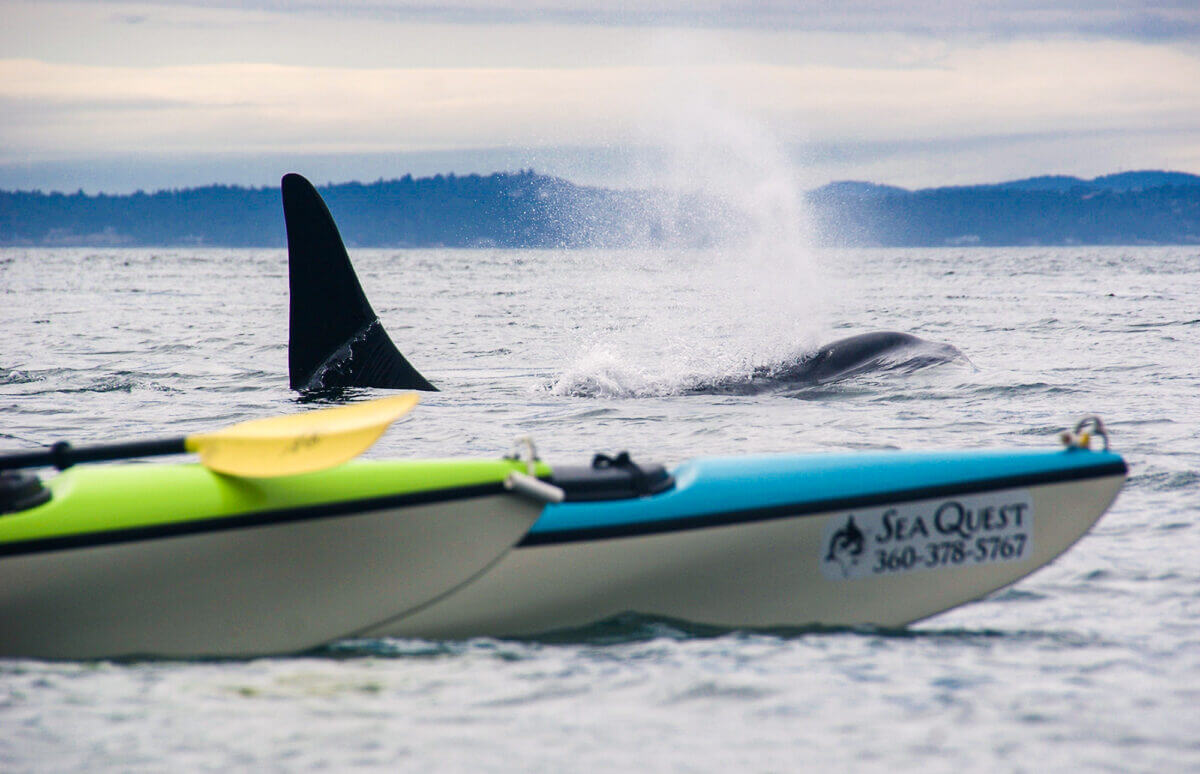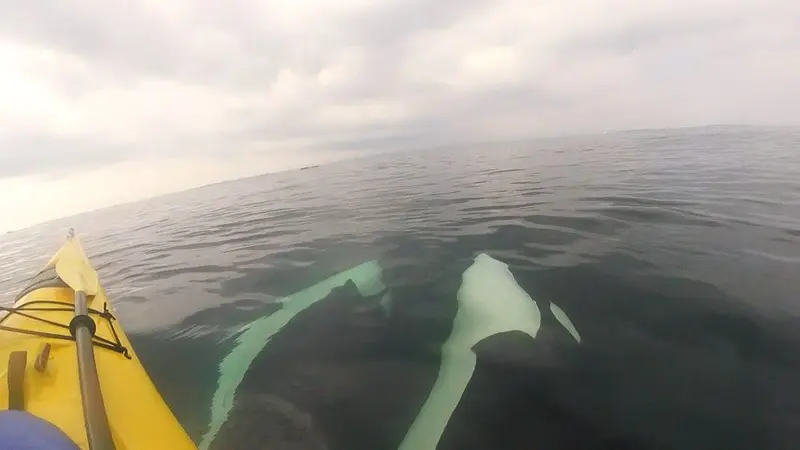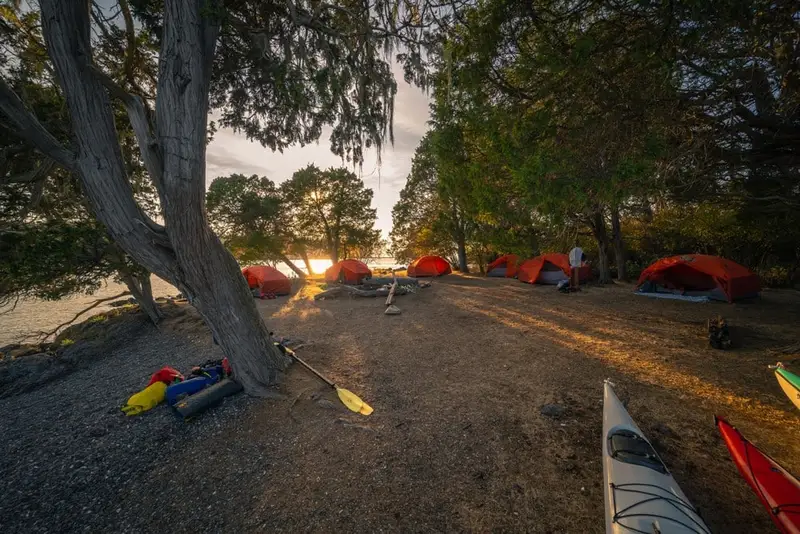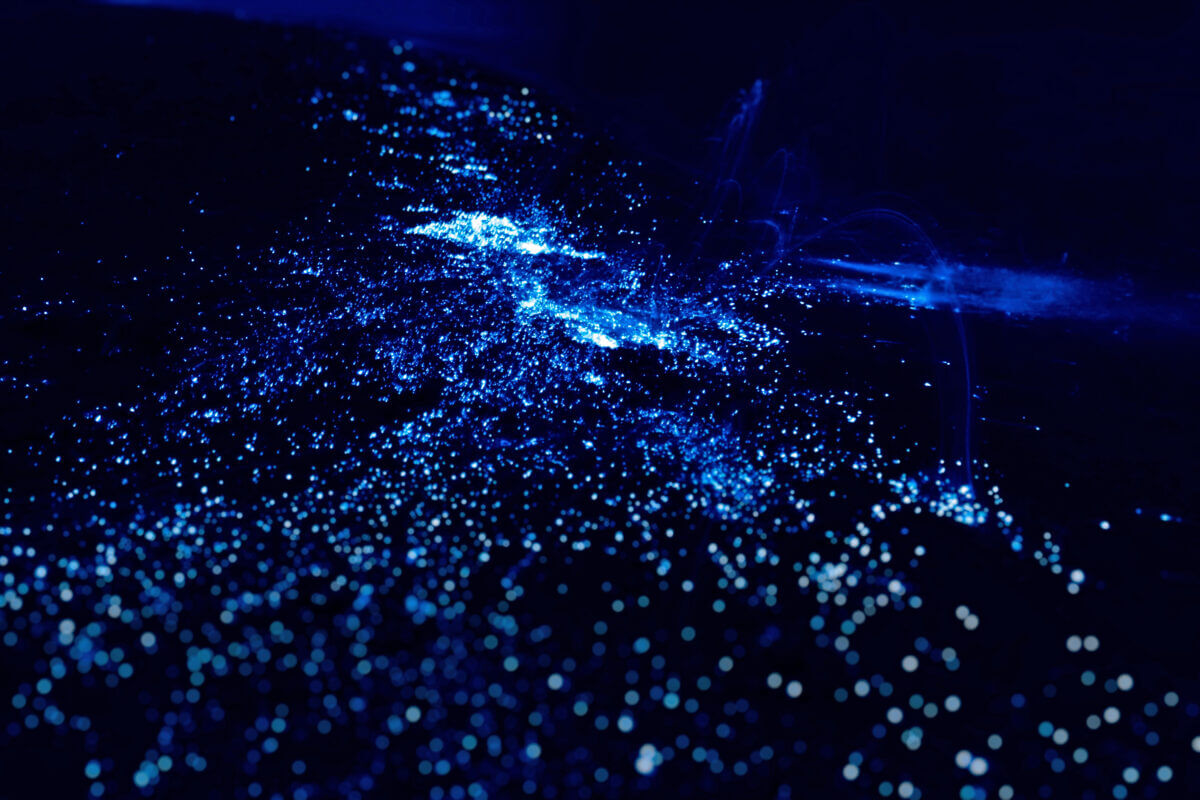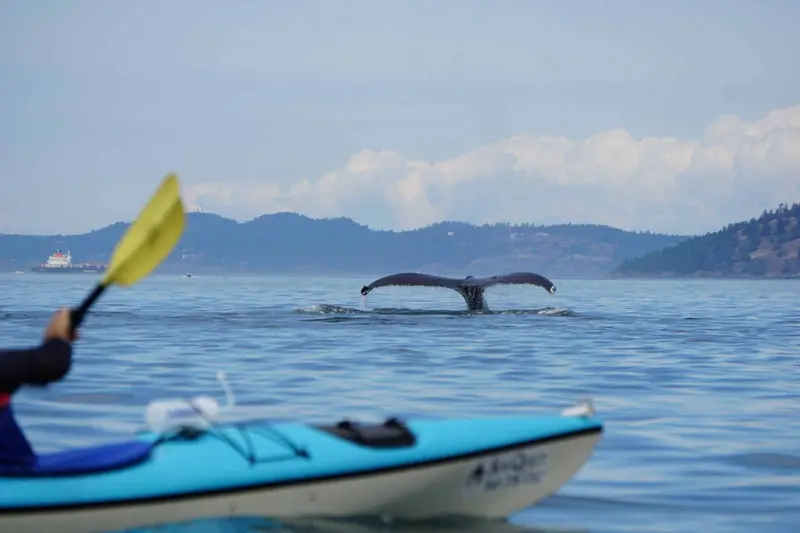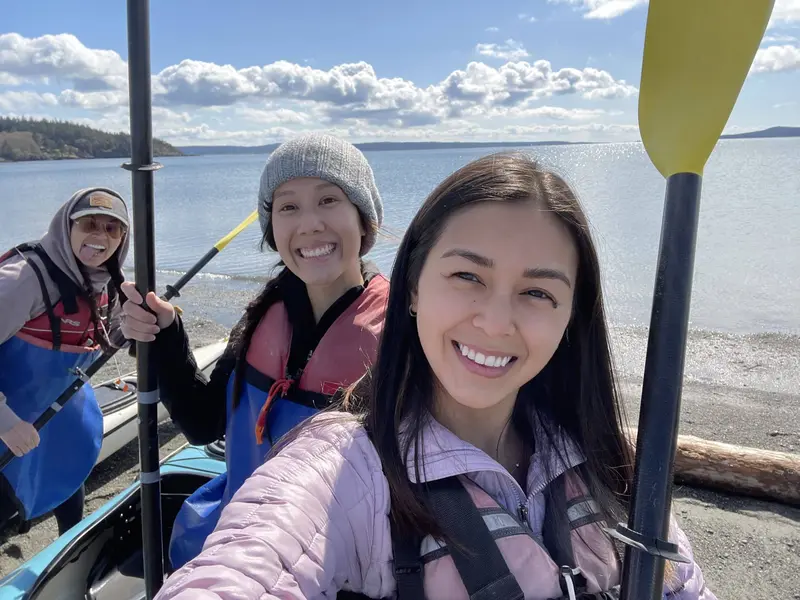“Oldsquaw” is a word that may catch a few eyes in this age of political correctness, just as the bird with this name did on our sea kayak tours this week in the San Juan Islands. Oldsquaw is the original American name for the long-tailed duck, a sea duck that nests circumpolar in the arctic tundra. This elegant winter visitor from the far north acquired its original colorful name from its musical yodeling or ululating call, reminiscent of the emotionally-charged Algonquin cries heard by early Euro-American settlers. Alas, the old name is now considered by some to be demeaning and hence the recent change to the boring descriptive.
Like most in its family, the long-tailed duck is courting at this time of year so their ululating cries, unique to all waterfowl, are heard ringing across the bays. The stunning males, with their bold plumage and elegant tails, are doing a lot of female chasing right now and putting on a good show for bird watching in the San Juan Islands. Very soon they will be departing for the arctic tundra to breed.
Most have waited until the pacific herring have finished spawning in the San Juan Islands and elsewhere in the Salish Sea. They cannot begin the long journey north without first putting on a heavy layer of fat to nourish them during the long flight. The fat generated from eating the rich herring roe is essential to this bird’s success in reaching the breeding grounds in sufficient health to raise the next generation.
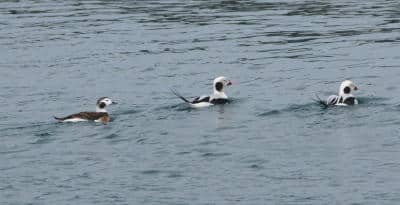
Many other sea duck species, as well as loons, grebes, alcids, and others, have long depended on mass herring spawns in Washington to support large wintering populations and provide the fat boost just before northward migration. Tragically, the herring spawns have dwindled drastically in recent decades. The most important spawning site has seen a decline of 95% and this identical dropoff has been observed in the overwintering populations of the bird families mentioned.
Herring is the keystone species of our entire marine ecosystem in the San Juan Islands and elsewhere in Washington. Healthy populations of herring are crucial to more than just sea birds; there are also salmon, harbor seal pups, eagles, orca whales, and so many more. Much, if not all, of the herring’s demise has been caused by human activity, especially the reshaping of shorelines by dredging, sea walls, and jetties. Chemical pollutants and sewage are major contributing factors. These are all problems that can be controlled with proper management.
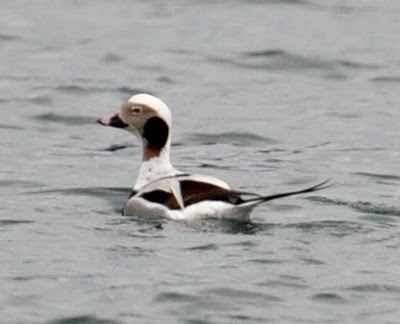
Strangely, although salmon and orca whales have been listed as endangered in Pacific Northwest, the decimated herring has been overlooked.despite their crucial role in the survival of both! Once again, the fisheries managers are proving uninterested, slow to react, and waiting for complete collapse per their usual stance. If action is taken now, it may be only a decade or two to full recovery of the pacific herring. If government agencies wait much longer if will likely take over a century to repair the damage and the entire Salish Sea ecosystem will suffer grievously, including the lovely long-tailed duck.

